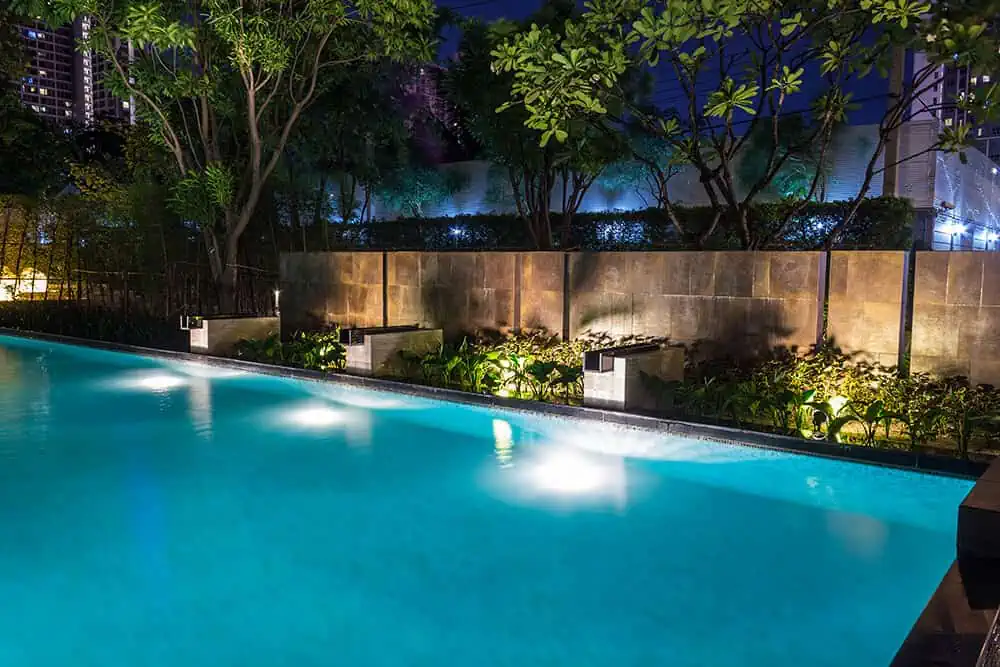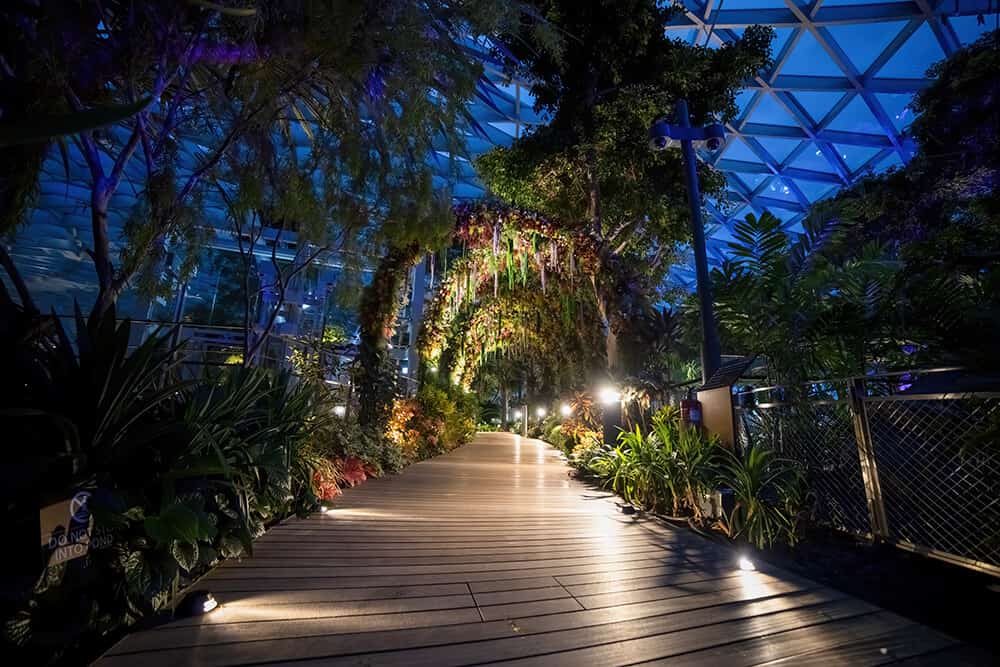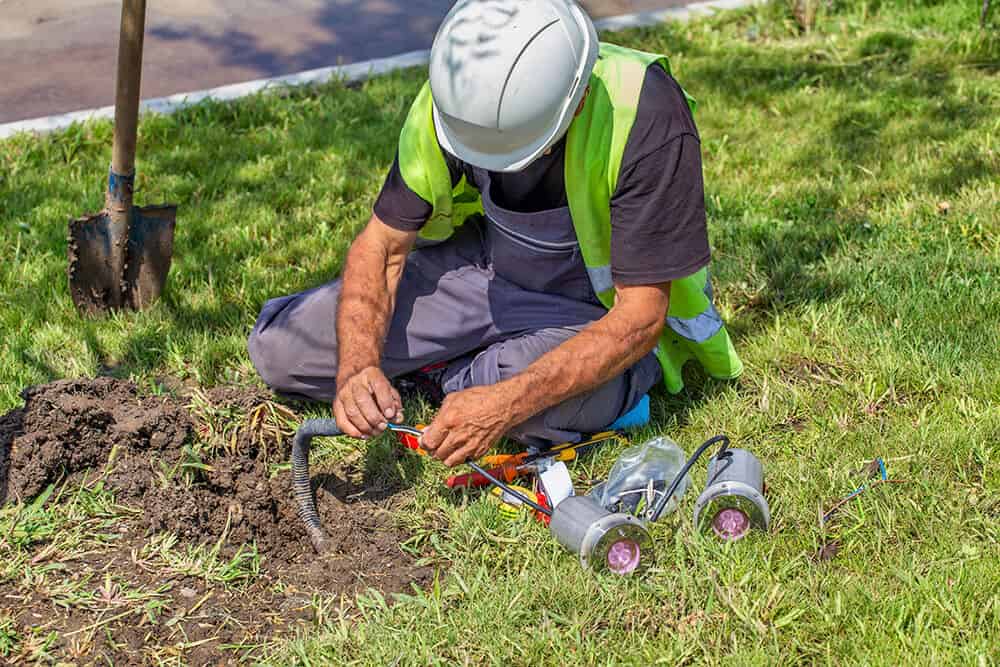Illuminating the landscape not only gives elegance to a property but also multiplies its value. However, when you start looking for landscape lighting solutions, you will find that it is very expensive. There are many factors that contribute to the high cost of landscape lighting, and we’ll break them down in this article. This article will discuss some cost-effective landscape lighting solutions you can implement on your property. So, let's get started.

What exactly is landscape lighting?
It’s important to know what landscape lighting actually is in order to figure out how much to spend on it. Just like lights in your bedroom, landscape lighting must be well thought out. You must consider the dimensions, elements, and many other factors of your landscaping. The purpose of landscape lighting goes far beyond mere illumination. It showcases the personality of the homeowner, highlights elements in the landscape, and improves the overall appearance of the property.
You can't just install a giant floodlight to light up the entire landscape. While it will serve a basic purpose, it's not exactly landscape lighting. You have to pick carefully between different light types, fixtures, and other things to properly illuminate the landscape.
A properly lit landscape will not only enhance the functionality of your landscape but will also give it your personality. It will leave an impression on anyone who ever visits your property.
What are the benefits of landscape lighting?
There's no denying that lighting your landscape can be expensive and time-consuming, but if done right, the benefits will make it all worth it. While you will get various benefits from it, let’s take a look at some of the major ones.

1. Improve the aesthetics of the property
Talk to an interior designer and they will tell you that the lighting in a space is just as important as the elements inside it. While dim lighting can make high-end elements look bland and dull, great lighting can bring life to a mediocre piece. The same goes for landscape lighting. If your landscape features a garden with tall trees, lighting them with the right light fixtures will turn them into a visual treat. Likewise, there are many options to turn a swimming pool or pond in your landscape into something straight out of a movie.
Simply put, great views will attract visitors and make them envious of your property.
2. Increase property value
Well-lit landscaping can increase the value of a property. Imagine walking into a home and seeing a landscape where lighting enhances every element inside. Then visited another house with a view but the lighting was below par. Which of them will be tempted to buy? The answer is simple and proves just how much of an impact lighting can have on property value.
This is especially important for those who want to buy a home and sell it later for a profit. Aside from a few quick repairs, home landscaping lighting will significantly impact the overall value of your property.
3. Improve security
Have you ever left a room with the lights on in the dark? If not, then you must do this as it will deter intruders. Landscape lighting works in a similar way; it adds another layer of protection to your home. It will keep the landscape well lit and make it difficult for intruders to hide when trying to break into the house. While this isn't the primary function of landscape lighting, it never hurts to have an extra layer of security.
Why is it so expensive?
The benefits of landscape lighting certainly sound enticing, but it can be very expensive, which may be a reason that prevents homeowners from going this route. However, by understanding exactly what makes it so expensive, one can bypass the cost and find an affordable solution. Let’s take a look at some of the reasons that make landscape lighting so expensive.
1. Materials
The materials required for landscape lighting must be of high quality. Fixtures, wiring and support structures must be able to withstand severe weather. They must withstand extreme heat and cold. Otherwise, the life of the landscape light will be greatly reduced. The market offers specialized landscape lighting materials that can tick all the right boxes. For example, fixtures should be waterproof and corrosion-resistant.
The most popular landscape lighting fixtures are made of cast copper. The most important benefit of this fixture is their lifetime warranty. Once you install them, you can rest assured that they won't break down, at least during your lifetime.
Therefore, the cost of producing such durable fixtures is delegated to the customer, making landscape lighting expensive.
2. Maintainance
When discussing the cost of landscape lighting, we must also consider the maintenance of such a system. Landscape lighting maintenance involves more than just replacing light bulbs when they start to fail. You must inspect the wiring, look for potential breaks, and check the supporting structure for possible corrosion or rust.
Considering that the area of the landscape is generally larger than the indoor area, replacement of lamps due to failure will increase the cost of landscape lighting. However, this particular expense can be reduced by choosing high-quality fixtures as discussed in the previous section.
3. Design
Similar to hiring a professional interior designer to design the interior of your home, you must also hire a professional for your landscape lighting. These professionals will examine the landscape and advise you on the feasibility of some designs. You may be tempted to do it all yourself, and that's fine, but hiring a professional is always a better option. In addition to discussing different designs, you can also compare different clamping options to make them cost-effective.
So while hiring a professional designer has a higher upfront cost, it can result in significant savings in the long run.
4.Installation costs
Once you've completed your design, you'll find implementing it is the easiest task. but it is not the truth. In fact, you may be able to make your landscape lighting work without hiring a professional designer. Still, you certainly can’t ensure its safety without hiring a professional installation service.
Wiring for landscape lighting is complex, and if something goes wrong, you could be exposed to a number of threats, including electrocution. If you hire a professional, they will carefully hide the wires so they don't threaten people strolling through the landscape. Additionally, professional installation of landscape lighting will also protect fixtures and other elements from environmental hazards.
The point is that without professional installation, maintenance costs and overall safety-related risks increase. Therefore, it is best to leave installation to the professionals and save money in the long run without exposing yourself to potential risks.
5. Types of lamps
When browsing landscape lighting options, you'll come across several types of lights. The most popular of these include incandescent bulbs, halogens, and LEDs. If you compare the prices of the three types of lights, you'll be tempted to choose incandescent bulbs. However, we don't recommend this, mainly because while incandescent bulbs are affordable, they aren't cost-effective. Not only do these fixtures consume higher energy, but their durability is also sub-par.
So even if you pay a low price up front, maintenance and replacement of these fixtures can quickly add up to the cost. Not to mention, such solutions will also significantly increase your energy bills.
In comparison, LEDs cost more upfront, but they are the most energy-efficient and durable solution ever created. The initial investment may be higher, but you'll reach your break-even point quickly. You will start saving a lot on your electricity bill compared to using incandescent bulbs.
:max_bytes(150000):strip_icc()/Globelightsingarden-4c26d304126645f6a31dba6193cb3dea.jpg)
6. Details of fees
Landscape lighting installation is more than just buying fixtures and hanging them with elements in your landscape. There are other things you must purchase, including support structures, fastening equipment, and equipment to install them. All of these can cost a lot and drive up the price of landscape lighting. You can save some money by hiring a professional as this does not require you to purchase tools for the professional.
Additionally, just like the lights, all of these elements must be strong enough to withstand the damage that harsh weather can bring. Therefore, you will have to purchase high-quality elements to implement an effective design.
Types of Landscape Lighting Technology
Now that you know how much landscape lights cost, let’s take a look at some great techniques that can save you big on your budget.
1. Path lighting
As the name suggests, path lighting is used to illuminate paths in the landscape, such as driveways, walking paths, and parking lots. There are a variety of techniques used to achieve this type of lighting. You can illuminate it with ground lights installed next to the path or with lanterns that can be installed with the help of support structures next to the path.
The former technique is affordable because it does not require the purchase of support structures. However, the latter looks more elegant.
2.Uplighting
Uplighting is more decorative lights installed under tall elements in the landscape, such as trees. These lights eliminate the shadows of these objects and highlight them, giving the overall appearance of the landscape a more elegant look. A variety of fixtures can be used to achieve this effect, including wall scones and troffer units.
3.Downlight
Downlighting is the opposite of uplighting in that it casts light from above the structure. To create a visually appealing effect, you can use them on several landscape elements, including pools and ponds. Light fixtures that can help you achieve this effect include gooseneck lights, barn lights, task lights, and table lamps. While the last two options are generally not recommended in landscaping, they look great around patio furniture if you use them in your landscaping.
4. Highlight
As the name suggests, highlighting is the technique of emphasizing certain structures in a landscape. This technique can highlight structures in the landscape, such as tall trees. This light comes in several different colors and can be used to create a contrasting atmosphere in different areas of the landscape.
5. Washing
Washing is achieved by installing spotlights at specific angles to illuminate different objects. Often, such lights are installed on the walls of shrubs to highlight them.
6. Under the moonlight
Moonlighting is a lighting technology that imitates natural moonlight. These lights are quite subtle and provide a very good outlook. You can use them around different structures in your landscape to create subtle lighting moods.
7. Grade
Floor lights installed within the floor are used to highlight surrounding objects. In addition to improving aesthetics, lighting also enhances the practicality of different areas. You can use them around paths and walking trails in your landscape to increase safety.

Types of landscape lights
You will find a variety of devices on the market to achieve the designs we discussed earlier. Let's find out the most common of them.
1. Path lights
Install path lights to increase the visibility of paths in the landscape. They allow you to walk safely without hitting or tripping over any obstacles. You can do this with in-ground lights or by installing small light posts along the path. While you can also use incandescent and halogen lights, LED lights are the best because they consume less power and have high durability. You don't have to check or replace it every once in a while, which is the case if you decide to go with a cheaper and sub-par incandescent solution.
2. Deck lights
Deck lights are used on patios for both practical and aesthetic purposes. You can use deck lights to illuminate different pieces of furniture from different levels. Additionally, these lights can also be installed on stairs within the house and on railings leading to open spaces on the roof of the house.
3. Area light
Area lights are used to create ambient light that illuminates a larger area. In most landscapes, you can illuminate an entire area using just an area of light. However, such lamps only have a practical purpose and have no decorative effect. You will have to install other fixtures along with it to make the landscape aesthetically pleasing.
4. Floodlight
Like area lights, floodlights are large lights that cover a larger area. This light projects a wide beam, covering a larger area. Exactly like area lights, these lights are used to create ambient light that is then decorated with other fixtures.

5. Spotlight
Spotlights are the polar opposite of floodlights in that they cast a narrow beam of light that is focused and highlights only specific parts or elements. You can use them to highlight landmarks in your landscape or cast light on tall trees. This type of lamp is usually more decorative than practical.
Tips for DIY Landscape Lighting Projects
If you have extensive landscaping surrounding your property, it’s a good idea to hire a professional service to design and implement landscape lighting conditions. However, if your landscape is smaller, you can try lighting it yourself. Follow these steps to brighten up your landscape without breaking the bank.
1. Complete the design
The first step in landscape lighting is to form a lighting design blueprint in your mind. You should analyze the landscape and the elements within it and make a mental sketch of it. Once you know how you want each element in your landscape to look, you can move on to the next step.
2. Find the right light bulb
After completing the design, compare the different options that must be implemented. As mentioned earlier, popular solutions include LED, halogen, and incandescent bulbs. We recommend using LEDs as they are not only cost-effective but also very flexible. You can find LEDs in a variety of shapes, sizes, and colors. The range of LED options will help you easily realize the design you have in mind.
3. Find good quality LED lights
If you decide to use LED lights, it’s important to buy the best quality ones. Unlike the lights in your interior, these lights will withstand harsh weather conditions, making them more durable than standard LED lights. Before choosing landscaping solutions, make sure they are suitable for outdoor use.
4. Try solar lights
The trickiest part of installing landscape lights is wiring them. You must also hide the wiring to prevent it from wearing out due to UV rays. To do this, you have to buy the right wires and other elements to hide it. However, this problem can be completely avoided by using solar lights. These lights charge themselves and don’t require any wires.
As a result, you will save on energy bills and make the process of installing landscape lights more convenient.
5. Avoid glare
One important thing to remember when lighting your landscape is not to overdo it. You should stay subtle and avoid bright lights which can make you feel very uncomfortable in the light. Various anti-glare fixtures are available, but they are often expensive. If you're on a tight budget, there are some DIY solutions for reducing glare from landscape lights.
Author 2025-06-12
Hishine Group Limited Will Meet Customers In Mexico City.Hishine is thrilled to announce its participation in Expo Eléctrica International 2025, Latin America’s premier trade fair for power and lighti...
Author 2025-05-12
Our recent business trip to Saudi Arabia proved to be a pivotal step in strengthening partnerships and exploring opportunities in the Kingdom’s rapidly growing energy and lighting markets. Below are t...